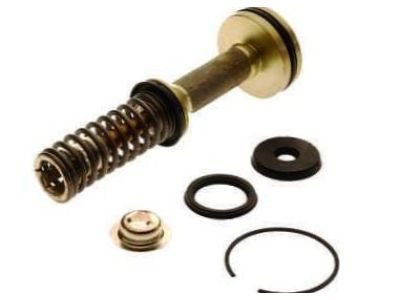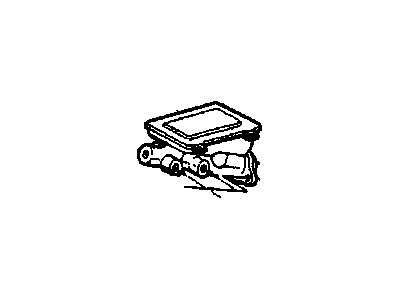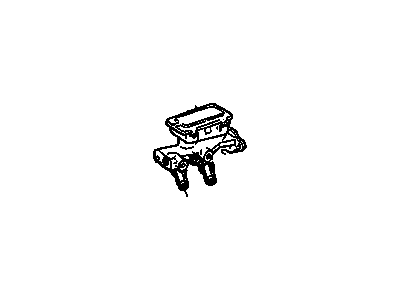
My Garage
My Account
Cart
Genuine Pontiac Phoenix Brake Master Cylinder
- Select Vehicle by Model
- Select Vehicle by VIN
Select Vehicle by Model
orMake
Model
Year
Select Vehicle by VIN
For the most accurate results, select vehicle by your VIN (Vehicle Identification Number).
3 Brake Master Cylinders found
Pontiac Phoenix Brake Master Cylinder
Brake Master Cylinder in Pontiac Phoenix cars plays an important role of the brake system; it transforms the pressing force of the driver's foot into hydraulic pressure. This operates by forcing hydraulic fluid through the system until it reaches the brake calipers or the drum brake where friction to stop is generated. Usually, the master cylinder has end and central circuits with two pistons where, in the case of failure in one circuit, the other one can provide the force of braking. Both cast iron and aluminium can be used in constructing the housings of Pontiac Phoenix models and the fluid reservoir can be internal or external. Integral reservoirs have one cap, but the external reservoirs can have either one or two threaded caps. However, over time, things like leakage or internal failure occur, and very close inspection is needed if the premier brake is to be achieved. Brake Master Cylinder such as the design and the functioning are crucial for safe vehicle operation.
Each OEM Pontiac Phoenix Brake Master Cylinder we offer is competitively priced and comes with the assurance of the manufacturer's warranty for the part. Furthermore, we guarantee the speedy delivery of your orders right to your doorstep. Our hassle-free return policy is also in place for your peace of mind.
Pontiac Phoenix Brake Master Cylinder Parts Questions & Experts Answers
- Q: How to overhaul a brake master cylinder on Pontiac Phoenix?A:Before dismantling, it is advisable to purchase a Brake Master Cylinder overhaul kit that includes all the necessary replacement parts, particularly the rubber seals, to ensure proper fluid control within the Brake Master Cylinder. During the rebuild procedure, be cautious not to allow grease or mineral-based solvents to contact the rubber parts. To protect painted surfaces from brake fluid spills, cover the front fender and cowling area of the car. Start by disconnecting the electrical lead from the brake failure warning switch and then disconnect the brake line connections, using rags or newspapers to soak up the fluid that will drain out. For manual brake setups, disconnect the Brake Master Cylinder pushrod from the brake pedal inside the car. Remove the two Brake Master Cylinder mounting nuts, take out the Brake Master Cylinder from the car, and drain any remaining fluid. Remove the brake failure warning switch and the two proportioner valves, noting their respective positions as they are different. For further disassembly, it is helpful to place the Brake Master Cylinder in a vice with blocks of wood on either side to avoid overstressing the aluminum body. Use an Allen wrench to remove the switch piston plug and extract the switch piston assembly from the bore. Next, remove the primary piston retaining ring and then the primary and secondary piston assemblies. Also, remove the plastic reservoir and the quick take-up valve retaining ring, and clean all parts in denatured alcohol, avoiding gasoline or mineral-based solvents that could damage the rubber seals. Inspect the cylinder bore for any imperfections and use crocus cloth if needed, rinsing the bore with clean brake fluid afterward. Replace the old seals with new ones, lubricate the bore with brake fluid, and reassemble the primary piston assembly. Similarly, disassemble and install new 0-rings and retainers for the switch piston assembly before putting it back into the cylinder. Install new 0-rings on the proportioner valves and the failure warning switch, and insert the quick take-up valve into the cylinder body with its retaining ring. Press new reservoir grommets into the cylinder body, place the reservoir top down on a flat surface, and press the cylinder body onto it with a rocking motion. Install the cylinder on its mounting studs and reconnect the Brake Master Cylinder pushrod (for manual brake setups) and the brake line connections, torquing them to specs. Reconnect the electrical lead to the failure warning switch. Fill the Brake Master Cylinder reservoir with brake fluid and bleed the brake system. Finally, install the reservoir diaphragm and cover, and test drive the car while checking for proper braking performance and leaks.






